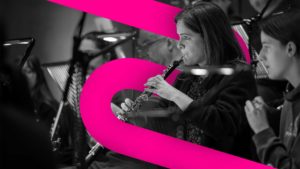
LMP Play Bach’s Brandenburgs

LMP Play Bach’s Brandenburgs
I Allegro
II Adagio
III Allegro
It seems that only a relatively small part of Bach’s orchestral oeuvre has been preserved for posterity. Much has been speculated about the reasons for the above-average losses in this particular field, but until now no really conclusive reasons have been found. The fact that so few works for instrumental ensemble have survived, particularly from the Weimar and Cothen periods, during which the composer directed so many excellent ensembles, has led many researchers to the hypothesis that Bach was obliged to leave the majority of his compositions in these places when he moved on to another post – a common custom for which much evidence can be found in many 18th-century documents; other considerations establish a connection with the distribution of Bach’s compositions to his heirs after his death. Whatever the case, only one thing is certain: after centuries of obscurity, a leap of faith was taken at the beginning of the 19th century that led to a renaissance of his music, the greater part of which by then was entirely unknown even to Bach connoisseurs, into the performance repertoire.
The Brandenburg concertos (BWV 1046–1051) are a collection of six instrumental works presented by Bach to Christian Ludwig, Margrave of Brandenburg, in 1721 (though probably composed earlier). They are widely regarded as among the finest musical compositions of the Baroque era.
Brandenburg Concerto No.3 in G major may have been written while Bach was at Weimar, given that it (along with Nos. 1 and 6) is reminiscent of the Italian concerto, a genre with which Bach was fascinated at the time. The motoric rhythm, clear melodic outline and motivic construction owe a lot to the comparable works of Vivaldi, but the clarified harmony and more interesting counterpoint are unmistakably Bach’s.
The concerto is scored for three groups, each consisting of three members of the violin family (three violins, three violas and three cellos). Bach is ingenious in the use of the various possibilities of combination: in one place the musical texture is shared between high, middle and low registers, in another place between three string trios, and occasionally individual representatives of each group come into prominence as soloists.
The work’s two main sections, both in G major, are separated by a brief Adagio – a short violin cadenza. The Italian concerto grosso’s distinction between concertino (a small group of soloists) and ripieno (the full ensemble) becomes in Bach’s hands, and especially distinctively in the Brandenburg Concerto No.3, a kaleidoscopic range of colours and shades.
© Elizabeth Boulton
The date of composition of this work is uncertain. It may have been written at Köthen where Bach was musical director from 1717 to 1723, and where an excellent instrumental ensemble was provided for him by Prince Leopold on Anhalt-Köthen who was himself a proficient and enthusiastic amateur musician. “I had hoped,” Bach later wrote to a friend, “to remain in his service until the end of my life.” He had, however, been tempted successfully by the prestigious position of Cantor to the church of St Thomas in Leipzig, a post that had first been offered to the famous composer Telemann, who eventually preferred to remain in Hamburg. Earlier Telemann had been organist in Leipzig where he had founded the Collegium Musicum, an instrumental ensemble of students and professional musicians of which Bach became the director in 1729. While it is not know where and when Bach composed his Suite No. 2, it must have been performed by the Collegium since his earlier orchestral works were included in its repertoire.
Bach gave the title ‘Overture’ to his Suite No. 2, but it is in fact, as the titles of the movements suggest, a French Suite for flute and strings. The Badinerie is a slight yet brilliant piece with very fast semiquaver passages.
It might be of interest that in Bach’s time the flute had only one key: the D sharp played by the little finger on the right hand. The solo part of Bach’s Suite No. 2 originally required much cross-fingering, but although the keys on the modern instrument have solved some of the technical problems, they have also created new ones.
© Stefan de Haan
I Allegro
II Andante
III Allegro assai
J.S. Bach, the most well known and celebrated member of the Bach family, composed six ‘Concerti for several instruments’ (Concerts avec plusieurs instruments) which he dedicated to Christian Ludwig, Margrave of Brandenburg on 24 March 1721. The concerti were composed over a considerable period before being assembled in 1721 as a collection and where presented to the Margrave by Bach in the hope of securing his patronage. However the Margrave lacked the required musicians to perform the works, and they sat in his library before being sold off after his death in 1734. The full scores were discovered in the archives of Brandenburg and due to their dedication, were christened the Brandenburg Concerti.
The various concerti are of special significance because they reject the standard form of the concerto grosso, as seen in the concertos of Vivaldi and use a variety of solo combinations. A large group of instruments, called the ripieno, play alongside a smaller group of soloists, called the concertino. It is in this later group that Bach developed different combinations of instruments across all six of his concerti. In his Concerto No.2, the concertino consists of a natural trumpet in F, flute, oboe and violin. Bach pushed his creative boundaries and wrote passages of high virtuosity, particularly for the trumpet, due to the skill of the musicians at his disposal during his time as kapellmeister to Prince Leopold of Anhalt-Köthen from 1717 to 1723. Musicologists believe that the trumpet part, regarded as one of the most demanding orchestral trumpets parts ever composed, was written for Johann Ludwig Schreiber, the court trumpeter in Köthen and not Gottfried Reiche, as originally thought. Reiche, a celebrated trumpeter and senior city piper of Leipzig, was noted for playing all of Bach’s first trumpet parts after Bach arrived in Leipzig in 1723, two years after the initial dedication of his Brandenburg Concerti.
The opening movement is a grand, stately introduction and instantly shows off the skill of the trumpeter with passages high in the instrument’s range consisting of numerous lip trills. The second movement in contrast is a slow, lyrical Andante which allows the violin, flute and oboe to pass between each other with various contrapuntal melody lines. The trumpet is omitted from the second movement, as is common with Baroque era concerti, due to the construction of the natural trumpet, which only allows it to play in one key. As the second movement moves into a different key, the trumpet is therefore excluded. The third movement is as striking as the first and the trumpet awakens with an opening passage virtuosic and high in its register. Trumpeters often choose to perform the work on the piccolo trumpet, as valve trumpets are preferred to natural trumpets nowadays. The movement is rapid and has an air of a courtly dance about it, before ending on a rather unexpected final cadence.
© Martin Sargeson
I Allegro
II Affetuoso
III Allegro
For reasons that remain obscure, only a relatively small part of Bach’s orchestral œuvre has been preserved for posterity. The fact that so few works for instrumental ensemble have survived, particularly from the Weimar and Köthen periods, during which the composer directed many ensembles, has led many researchers to the hypothesis that Bach was obliged to leave the majority of his compositions in these places when he moved on to another post. Other considerations establish a connection with the distribution of Bach’s compositions to his heirs after his death. These reasons, coupled with a profound change in musical taste and fashion, led to Bach’s music plunging into obscurity after his death until his renaissance at the beginning of the 19th century. However, since then, Bach’s orchestral works have enjoyed enormous and enduring popularity.
In 1719, Bach visited Berlin on an errand, where he met Christian Ludwig, Margrave of Brandenburg. The following year Bach began to find that retaining his current position in Köthen was losing its appeal for a number of reasons, among which, reportedly, was Princess Friderica’s dislike of Bach’s music. (Friderica was the new wife of Bach’s employer, Prince Leopold.) Perhaps as a bid for a new position, Bach collected a group of his works and sent the dedicated score entitled ‘Six Concertos for Several Instruments’ to the Margrave, but it is not clear whether he responded or not.
Now known as the ‘Brandenburg Concertos’ due to their dedicatee, each concerto has little in common with the others. The instrumentation, keys and themes change from one concerto to the next, but in them, Bach took the realisation of the concerto form to a new level that was in every case convincing, novel and original, as well as exploring various new tone colours within the various instrumentations.
Brandenburg Concerto No. 5 is famous for being considered as the herald of the keyboard concerto as a genre. The virtuoso soloist is supported by a small concertino of flute and violin. The imposing harpsichord cadenza that almost bursts the boundaries of the first movement was added by Bach while he was preparing the definitive score for the dedicatee – presumably in order to remind the Margrave of his own skill as a virtuoso as well as try out a fancy new harpsichord he’d just purchased. After the slow movement, an intensively worked-out quartet setting, the work concludes with a cheerful Gigue in a loose fugal form.
© Elizabeth Boulton
Violin 1
Simon Blendis
Jessica Coleman
Nicoline Kraamwinkel
Ann Criscuolo
Anna de Bruin
Violin 2
Antonia Kesel
Gemma Sharples
Elise Scheurer
Clare Hayes
Felix Pascoe
Viola
Judith Busbridge
Christine Anderson
Oliver Wilson
Cello
Ella Rundle
Ben Rogerson
Leo Popplewell
Double Bass
Benjamin Russell
Harpsichord
David Wright
ACTING CHIEF EXECUTIVE (Projects Director)
Sophie Haynes
CONCERTS
Orchestra Manager & Fixer Jason Weir
Artistic Projects Coordinator Alex Mackinder
DEVELOPMENT
Development Director Tristen Hennigs
Fundraising & Operations Peter Wright
Fundraising Consultant Paul Hudson
Outreach & Evaluation Consultant Bec Britain
Honorary Chair – Friends of LMP Christine Robson
MARKETING
Senior Marketing & PR Manager Anna Bennett
Marketing and Development Coordinator Bethany Penny
Digital Marketing Manager Charles Lewis
EVENTS
Royal Event Manager Rachel Rae
Freelance Events Producer Sophie Branscombe
FINANCE
Bookkeeper Debbie Charles
Leader Debbie Beckerman & Keith Jones
Leader Sophie and Jeffrey Prett
Co-Leader Michael Southwell
Violin 1.3 Liz and Alistair Milliken
Violin 1.4 Gill Cox
Violin 1.5 Christine Robson
Violin 1.6 Della Brotherston
Violin 1.7 currently not sponsored
Violin 1.8 currently not sponsored
Violin 1.9 currently not sponsored
Associate First Violin currently not sponsored
Principal Second Violin Barbara Maw
Violin 2.2 The Angel Family
Violin 2.3 Mia and Keith Ball
Violin 2.4 Alastair Fraser
Violin 2.5 currently not sponsored
Violin 2.6 Catherine Shaw – Allbone and Trimit
Associate Second Violin currently not sponsored
Principal Viola Mark and Vanessa Petterson
Co-Principal Viola Stanley Slaughter & Linda Davidson
Viola 3 currently not sponsored
Viola 4 currently not sponsored
Associate Viola currently not sponsored
Principal Cello Anonymous
Sub-Principal Cello Leslie Aarons
Cello 3 Gillian Noble
Cello 4 currently not sponsored
Associate Cello Colin and Helen Snart
Associate Cello
Principal Double Bass John Clarke
Co-Principal Double Bass The Bristow Family
Principal Flute currently not sponsored
Sub-Principal Flute Raymond Calcraft
Principal Oboe currently not sponsored
Co-Principal Oboe currently not sponsored
Sub-Principal Oboe currently not sponsored
Principal Clarinet Deirdre Lea
Sub-Principal Clarinet Graham Harman
Principal Bassoon currently not sponsored
Sub Principal-Bassoon Barbara Tower
Principal Horn currently not sponsored
Sub-Principal Horn currently not sponsored
Principal Trumpet Ishani Bhoola
Sub-Principal Trumpet Cynthia Harrod-Eagles
Principal Trombone currently not sponsored
Sub-Principal Trombone currently not sponsored
Principal Bass Trombone currently not sponsored
Principal Timpani Cynthia Harrod-Eagles
Principal Percussion currently not sponsored
Beethoven and McNeff: LMP with Fenella Humphreys
Friday 21 November 2025
St. Martin-In-The-Fields
When revolution breaks down artistic boundaries, music from centuries past can still have an impact today. Beethoven’s ‘Eroica’ sets the tone for musical innovation in this concert, paired with the world-premiere of Stephen McNeff’s Violin Concerto, played by Fenella Humphreys.
Michael Cox
flute
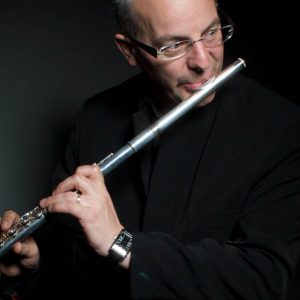
Michael Cox is one of Britain’s foremost flute-players. Although born in England he spent his childhood in Africa. He studied music at the Zimbabwe College of Music and then the Royal College of Music in London. Early competitive successes led directly to a solo career that has included concerts and recordings in all continents and performances with major orchestras and conductors.
As a chamber musician he has performed with many well known British quartets, quintets and ensembles (and worked alongside musicians of the ilk of James Galway and Murray Perahia) as well as being a member, at various times, of the Haffner and Albion wind ensembles, London Symphony Chamber Players and London Sinfonietta.
An interest in a wider repertoire led to a concurrent orchestral career, first as co-principal with the BBC Symphony Orchestra, and then as principal flute of the London Symphony Orchestra, London Mozart Players and Britten Sinfonia. He now holds what he considers an ideal portfolio of tenures combining the principal flute chairs of a symphony orchestra, chamber orchestra and a contemporary music ensemble – namely the BBC Symphony Orchestra, the Academy of St Martin’s in the Fields and the London Sinfonietta. Through this work he has worked with a great raft of the world’s greatest conductors and soloists. Also, his particular interest in contemporary music has meant that he has also worked, often closely, with composers such as Messiaen, Takemitsu, Dutilleux, Berio, Boulez, Tippett, Birtwistle, Stockhausen, Henze, Adams, Carter, Penderecki, Lutosławski.
A passionate and highly dedicated teacher Michael Cox is professor of flute at the Royal Academy of Music in London and is sought after as a visiting consultant and by students worldwide.
Gareth Hulse
oboe
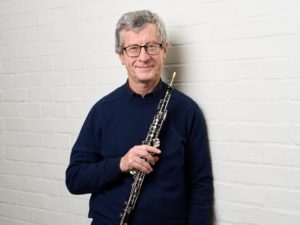
After reading music at Cambridge, Gareth Hulse studied with Janet Craxton at the Royal Academy of Music, and with Heinz Holliger at the Freiburg Hochschule fur Musik. On his return to England he was appointed principal oboe with the Northern Sinfonia, a position he has since held with English National Opera and the London Philharmonic. As well as with the London Mozart Players he is principal oboe with the London Sinfonietta, and with them has performed concertos by some of the world’s leading composers, such as Berio, Ligeti, Penderecki and Carter. Gareth is also a founder member of London Winds, with whom he recorded the award winning discs of the complete wind music of Richard Strauss, and the wind serenades of Mozart. He has been a member of the Nash Ensemble for many years, and with them has played in many countries both the classical repertoire and contemporary chamber music. Gareth Hulse teaches at the Royal College of Music, and is now principal oboist of the BBC Concert Orchestra.
Simon Blendis
leader
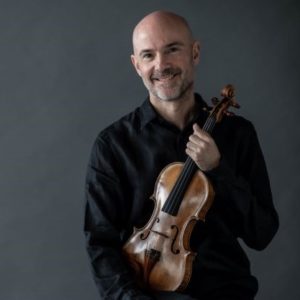
Simon Blendis enjoys a varied career as a chamber musician, soloist and orchestra leader. He was a member of the Schubert Ensemble for twenty-three years, with whom he has performed in over thirty different countries, recorded over twenty CDs, made frequent broadcasts for BBC Radio 3 and appeared regularly at Europe’s major venues.
In 2014 Simon was appointed leader of the London Mozart Players, and since 1999 has been one of the leaders of Orchestra Ensemble Kanazawa in Japan, with whom he has recorded Vivaldi’s Four Seasons for the Warner label. He is also in demand as a guest-leader and guest-director and has appeared in this role with most of the UK’s major orchestras. As a soloist he has made recent appearances with the Philharmonia Orchestra, the Academy of St. Martin-in-the-Fields, the Royal Philharmonic Orchestra and the City of Birmingham Symphony Orchestra.
Simon is a keen exponent of new music. He has given over 50 first performances and has had new works written for him by, amongst others, John Woolrich, Tansy Davies and jazz legend Dave Brubeck.
Simon is increasingly sought after as a teacher and is Professor of Violin at Guildhall School of Music and Drama.
David Blackadder
trumpet
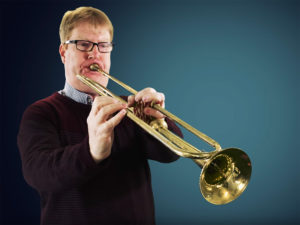
David took up the trumpet aged nine following in the footsteps of his grandfather who was a bandmaster in the North East. He joined the Leicestershire Schools Symphony Orchestra and went on to study at the Royal College of Music with Michael Laird.
After a season as guest principal trumpet with Scottish Opera he joined the English Baroque Soloists and Orchestre Revolutionaire et Romantique as principal trumpet under Sir John Eliot Gardiner and also became principal trumpet with the Academy of Ancient Music with Christopher Hogwood.
During this time he performed extensively at major concert venues throughout the world and took part in numerous recordings for CD, radio, TV and video.
In 1993 he formed the groundbreaking group Blackadder Brass which quickly became the resident educational ensemble at Symphony Hall in Birmingham, playing to over 40,000 children in its first three years. He is also a professor at Birmingham Conservatoire.
David is also principal trumpet with the Orchestra of the Age of Enlightenment and is renowned as a soloist having performed and recorded many of the great trumpet masterpieces with conductors such as Sir Simon Rattle, Sir Roger Norrington, Franz Brüggen, Vladimir Jurowski and Stephen Cleobury. He has performed the Haydn Trumpet Concerto to great acclaim at major venues across Europe including at the Edinburgh festival, Kings College Chapel and the Esterhazy Palace in Hungary.
His recordings of Handel arias with singers such as Reneé Fleming, Kiri Te Kanawa and Elin Manahan -Thomas have received particular critical acclaim and he has also recorded the second Brandenburg Concerto three times, most notably with Trevor Pinnock, in a recording that received the best Baroque instrumental award at the 2008 Gramophone Awards.
David Wight
harpsichord
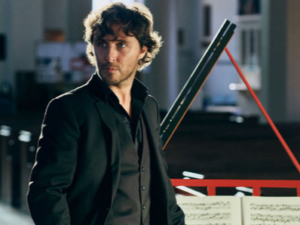
David took up the trumpet aged nine following in the footsteps of his grandfather who was a bandmaster in the North East. He joined the Leicestershire Schools Symphony Orchestra and went on to study at the Royal College of Music with Michael Laird.
After a season as guest principal trumpet with Scottish Opera he joined the English Baroque Soloists and Orchestre Revolutionaire et Romantique as principal trumpet under Sir John Eliot Gardiner and also became principal trumpet with the Academy of Ancient Music with Christopher Hogwood.
During this time he performed extensively at major concert venues throughout the world and took part in numerous recordings for CD, radio, TV and video.
In 1993 he formed the groundbreaking group Blackadder Brass which quickly became the resident educational ensemble at Symphony Hall in Birmingham, playing to over 40,000 children in its first three years. He is also a professor at Birmingham Conservatoire.
David is also principal trumpet with the Orchestra of the Age of Enlightenment and is renowned as a soloist having performed and recorded many of the great trumpet masterpieces with conductors such as Sir Simon Rattle, Sir Roger Norrington, Franz Brüggen, Vladimir Jurowski and Stephen Cleobury. He has performed the Haydn Trumpet Concerto to great acclaim at major venues across Europe including at the Edinburgh festival, Kings College Chapel and the Esterhazy Palace in Hungary.
His recordings of Handel arias with singers such as Reneé Fleming, Kiri Te Kanawa and Elin Manahan -Thomas have received particular critical acclaim and he has also recorded the second Brandenburg Concerto three times, most notably with Trevor Pinnock, in a recording that received the best Baroque instrumental award at the 2008 Gramophone Awards.

 Introducing our new Chief Executive, Chrissy Kinsella
Introducing our new Chief Executive, Chrissy Kinsella 